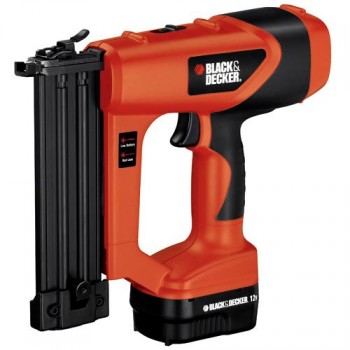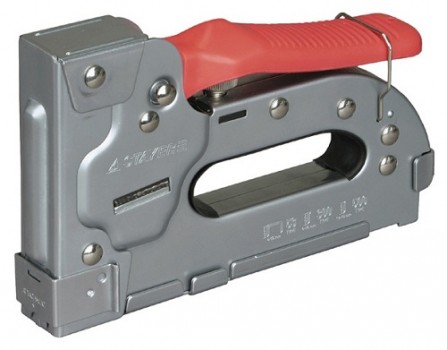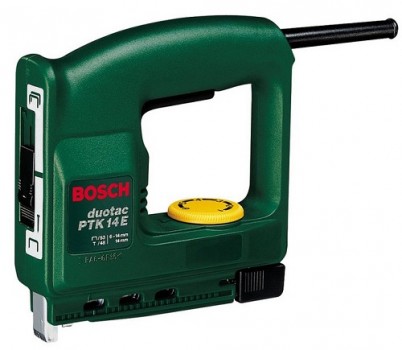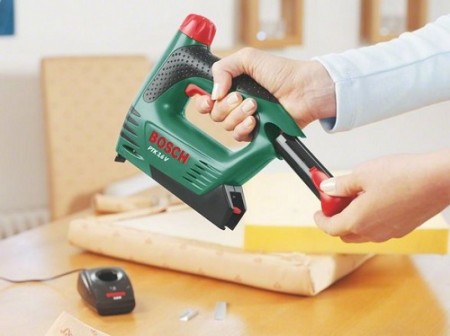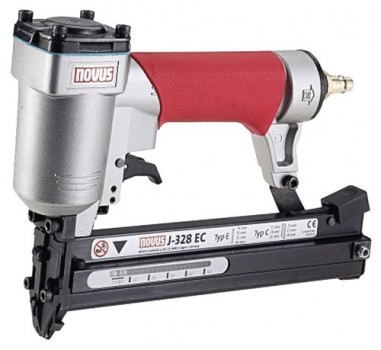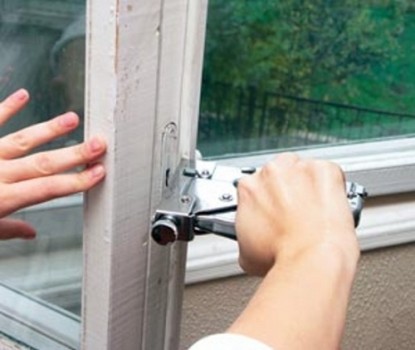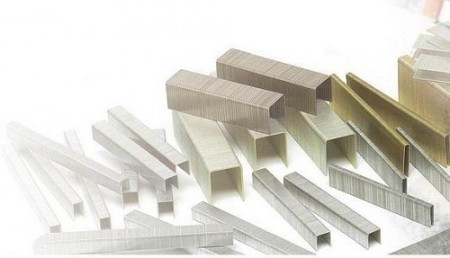Such a tool as a stapler is known to everyone. Only at the mention of this device most people imagine a usual small office stapler, which is so convenient to bind documents. But this, so to speak, superficial, amateurish idea of this universal tool. Stapler is intensively exploited in construction, furniture production, wiring. All types of staplers, their purpose, advantages and disadvantages, we will consider in this article. And also pay attention to what needs to be guided when choosing this or that type of stapler.
Content
Building stapler
This tool has many names: stapler, stacker, furniture stapler. And all these names are correct, since in one way or another designate the purpose of the instrument - to hammer a brace or nail into the proper place.
The construction stapler is, in its essence, a hammer, only improved. Like any hammer, a construction stapler is a very useful tool, and in some cases irreplaceable. Used for fastening and fixing all sorts of building materials: plywood, plastic particle board, thin metal. Strengthen them and soft materials: leather, all sorts of insulation, insulation, roofing felt,, etc.
application of a stapler in construction
- Internal and external fixing of roofing material, insulation of various types, vapor barrier of the floor, walls, roof, etc.
- Sealing joints in the construction of log houses: with the help of a stapler, a heat insulation tape is attached.
- Installation and fixing of false ceilings
- Installation of wooden and plastic lining, a thin board, various kinds of decorative panels, which are mounted on a wooden frame.
- Laying electric cables of different thickness and purpose.
in furniture production
- The furniture stapler is used both for the assembly of the furniture itself and for upholstery of the frame material - fabric, leather, etc.
- For decoration.
in the country
In the summer residence for the stapler, too, there is a lot of work:
- Manufacturing of a greenhouse, a greenhouse. If the frame of the greenhouse is made of wood, then with a stapler you can very quickly attach a film to it.
- Manufacturing of furniture, flower pots, small houses for pets, etc.
Building stapler: types
All construction staplers are divided into household - mechanical or electro staplers of low power, and professional. Professional models are, as a rule, power tools that are powered by a network or battery, which have high power and performance.
Depending on the type of food for work, the staplers are divided into:
mechanical tools
Such a stapler is simple, reliable, inexpensive, small in size and absolutely safe. The simpler the tool, the more reliable it is. This fully applies to a mechanical stapler with its extremely simple device: body, lever and spring. However, the mechanical stapler is a very weak tool, which significantly affects the strength of the fastening. Hence the limitation of materials with which you can work with a mechanical stapler. This is, first of all, cardboard, polyethylene film, thin plastic and wooden boards, plywood, fabric. In addition, to work with a mechanical stapler, you need to apply a physical effort. The hand gets tired quite quickly, especially with large amounts of work. To work productively with a mechanical stapler for the whole day, you need to be a strong enough person.
electrotool
The advantages of the electric stapler are obvious: you do not need to apply physical efforts at work, very high productivity and power, the ability to adjust the impact force.
But there are also disadvantages, unfortunately:
- High price. Any professional tool costs good money, and an electric stapler is no exception.
- The weight. For strength and power you have to pay: the more powerful the tool, the heavier it is. Quite often, the large weight of the instrument is very difficult to work, especially in a hard-to-reach place.
- High probability of overheating. No power tool of high power can be operated without interruption for a long time - it will inevitably overheat. As a result - the power drop, or the tool can simply burn.
- Electric cord. The very presence of a cord in any power tool is a significant drawback. Limited maneuverability, the possibility of bending, breaking, etc.
battery tool
A stapler with a battery-type power supply is quite powerful, a mobile tool of relatively small size.
However, even this instrument, which is remarkable at first glance, has its drawbacks:
- The weight. Power, which has a battery stapler, directly depends on the battery, which weighs pretty well.
- The use of cheap batteries of poor quality. As a result, a long charging time or a quick battery failure will cause a lot of inconvenience.
- High price. A powerful, quality stapler with a good battery will fly you in a round sum.
pneumatic tools
Lightweight, highly productive powerful stapler. However, he is not without minuses:
- Lack of maneuverability. The pneumatic tool is always tied to a source of compressed air, most often to a compressor. This makes it bulky and heavy due to the connected hoses.
- High price.
By type of consumables all the above types of staplers are divided into:
- Nailers.
- Staplers.
- Universal - they work with staples, small stilettos and nails.
How to choose a construction stapler
The first and most obvious question that you need to ask yourself when buying a stapler: for what purpose do I need it? What exactly will I do to them? When a stapler is needed, as a dacha tool, or just "to be" at home, if there is a need, then there are no options. Take a simple manual stapler, the dimensions of which allow you to easily reach the most inaccessible places.
If you are professionally engaged in the manufacture or repair of furniture, then you should think about buying a professional battery stapler. This tool is especially good for outdoor work on insulation and thermal insulation of buildings. If you work indoors, buy an electric stapler that works from the network. And maybe you are the owner of a small workshop? Then you really need a powerful pneumatic tool.
Types of staples
One of the most common types of staples for the stapler is type 53. The thickness of this clamp is 0.7 mm, the width is 11.4 mm, the depth of clogging is from 4 to 14 mm. By the way, the depth of most types of staples is a maximum of 14 mm. It all depends on the model of the stapler. One tool can clamp a maximum of 8 mm, the other at 12. Staples are selected depending on what kind of work needs to be done. To enclose furniture with a cloth or fix a plastic film, the bracket 8 mm is quite suitable. If you want to work with thicker material, you need a deeper staple.
Another fairly common type of staple for a hand-held stapler is 140. It's necessary to be careful when buying: if you load the 53 staple into the 140 staple gun, he will hit two at once. The bracket type 36 is a semicircular bracket intended for cable installation. Type 300 is nails. Naturally, not simple, but designed specifically for staplers. Nails and staples are always sold in a package of 1000 pieces.
Now with regard to consumables
When choosing a tool, always pay attention to which consumables it can work with. If the stapler works with a wide range of staples and pins of different shapes and shapes, then such a tool will become simply indispensable in everyday life, you buy yourself a reliable assistant in the household, and you will not regret the money spent on it. However, it does not hurt to ask about the cost of consumables that the stapler "eats". They should be inexpensive and affordable, sold in each specialized store, so that if necessary, do not have to go for a pack of hairpins to the other end of the city.
As you can see, the stapler is not just a clerical trinket on the desktop, but a full-fledged powerful tool, an indispensable assistant for construction and repair work. And if you decide to purchase this wonderful tool for yourself, we hope that in this publication you have found answers to all the main questions on the topic.



